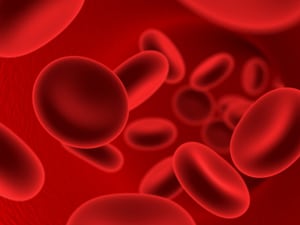In many ways it’s hard to believe it’s been three years since I wrote the post Should Healthy Men Have a PSA Test for GE’s Healthy Outlook blog. At the time, the U.S. Preventive Services Task Force was on the brink of recommending against routine screening for men who have no symptoms of prostate cancer, regardless of age, race or family history. This Movember 2014, the Canadian Task Force on Preventive Health Care came to the same conclusion.

The controversy about whether healthy men should have a PSA test still rages because the test has a wide margin of error at both ends of the false alarm scale — false positives that may lead to unnecessary treatments like biopsies, and then radiation, chemotherapy and/or surgery; and false negatives that lead to unnecessary deaths because the cancer wasn’t found in time.
What causes false positives? Elevated PSA levels can be caused by things that are not cancer, such as benign prostatic hyperplasia (non-cancerous enlargement of the prostate), inflammation from riding a bicycle, a urinary tract infection, or ejaculation within 2 days prior to the test. At the other end of the scale, false negatives can happen because prostate cancer doesn’t always cause an elevated PSA level in the blood.
Richard J. Amblin, the researcher who discovered prostate-specific antigen in 1970, said in an op-ed in the New York Times in 2010 that the PSA test is “a hugely expensive public health disaster,” and is “hardly more effective than a coin toss.” Recently, health journalist André Picard weighed the pros and cons of the test in The Globe and Mail and said, “Almost all the 23,600 men diagnosed with prostate cancer this year will be convinced that testing saved their lives. The reality is a tad more complicated. We have a lousy test, and physicians and their patients must decide how much stock to put in it.”
So while it may be tempting to abandon the test altogether, the men who were lucky to find an aggressive cancer and treat it in time because their PSA test indicated trouble brewing are certainly not going to agree with statisticians on the cost/benefit tradeoffs of public health screening. According to the Canadian Cancer Society, one in 8 Canadian men will develop prostate cancer in their lifetimes. In 2014 alone, 23,600 men will be diagnosed with prostate cancer and 4,000 men will die from the disease.
Dr. Rajiv Singal, head of the urology division at Toronto East General Hospital and Medcan’s director of urology writes that abandoning the PSA test outright is a short-sighted mistake. He advocates instead for baseline testing followed by “smart screening” at intervals that make sense to see how PSA score changes over time, and taking other risk factors into account, such as family history and ethnic background. This makes sense, especially because the PSA is only a blood test, a rough indication, and not a commitment to anything further.

The PSA test has another problem: It cannot distinguish between aggressive, fast-growing cancer that needs treatment, and the more common indolent, or slow-growing cancer that may not require any treatment at all.
So what’s on the horizon for finding a better diagnostic tool for prostate cancer?
Dr. Singal says, “An ideal screening test is one that will detect a cancer at a point where intervention will alter the natural history of the disease and where that treatment can be performed safely and in a cost-effective manner.”
It’s that sweet spot that researchers around the globe are pursuing. For example, here are two promising, non-invasive avenues of research for better prostate cancer detection and characterization:
- Gene variants. An international research team announced September 15, 2014 that they have found 23 new genetic variants associated with a greater risk of prostate cancer, bringing the total known to 100. The work moving forward will be to translate these findings into a reliable diagnostic blood or urine test that can be used for public health screening. As I reported in my story three years ago, two researchers at the University of Michigan developed a two-gene DNA urine test that can detect two biomarkers found in 95% of prostate cancers called PCA3 and TMPRSS2:ERG gene fusion. I’m not sure why, but it appears the PCA3 test was commercialized alone, to be used together with a PSA test, and was approved by both the FDA and Health Canada. In Canada, the test is not widely available yet, but hopefully will be soon.
- Better imaging techniques. In the UK, professor Mark Emberton is studying the effectiveness of multi-parametric magnetic resonance imaging (mpMRI) to detect and characterize prostate cancer before biopsy and then help guide biopsy if required. An mpMRI consists of three different types of high definition images that together provide a better picture of prostate gland tissue. The PROMIS trial has been underway since 2012 and is targeted to finish in 2015. The study design indicates they will also evaluate the economics of using this imaging technique. This 2013 paper in Prostate Cancer and Prostatic Disease (Nature Publishing Group) concluded that mpMRI showed encouraging diagnostic performance to detect and rule out clinically significant prostate cancer in men at risk, before biopsy was performed.

